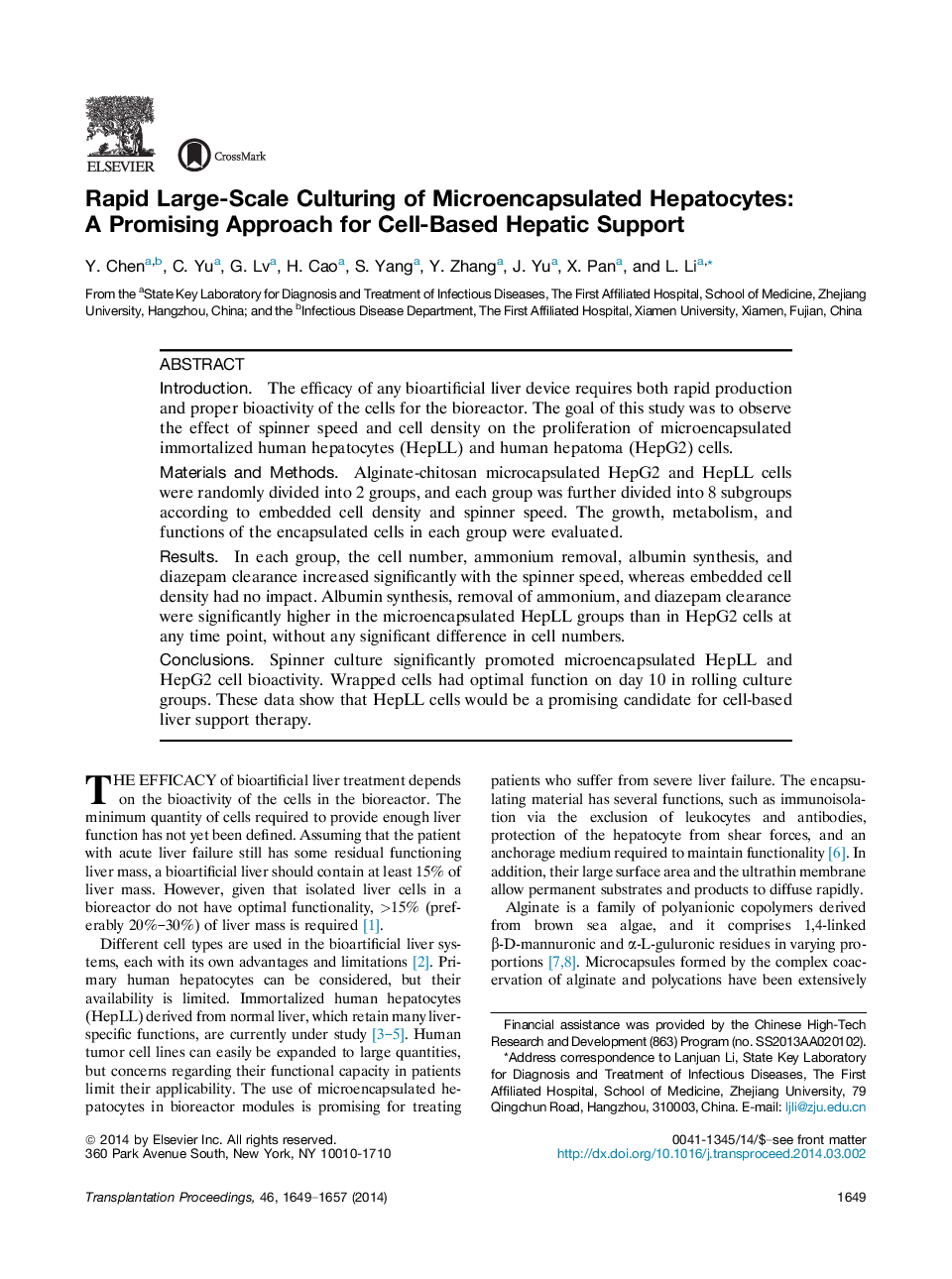| Article ID | Journal | Published Year | Pages | File Type |
|---|---|---|---|---|
| 6246350 | Transplantation Proceedings | 2014 | 9 Pages |
IntroductionThe efficacy of any bioartificial liver device requires both rapid production and proper bioactivity of the cells for the bioreactor. The goal of this study was to observe the effect of spinner speed and cell density on the proliferation of microencapsulated immortalized human hepatocytes (HepLL) and human hepatoma (HepG2) cells.Materials and MethodsAlginate-chitosan microcapsulated HepG2 and HepLL cells were randomly divided into 2 groups, and each group was further divided into 8 subgroups according to embedded cell density and spinner speed. The growth, metabolism, and functions of the encapsulated cells in each group were evaluated.ResultsIn each group, the cell number, ammonium removal, albumin synthesis, and diazepam clearance increased significantly with the spinner speed, whereas embedded cell density had no impact. Albumin synthesis, removal of ammonium, and diazepam clearance were significantly higher in the microencapsulated HepLL groups than in HepG2 cells at any time point, without any significant difference in cell numbers.ConclusionsSpinner culture significantly promoted microencapsulated HepLL and HepG2 cell bioactivity. Wrapped cells had optimal function on day 10 in rolling culture groups. These data show that HepLL cells would be a promising candidate for cell-based liver support therapy.
